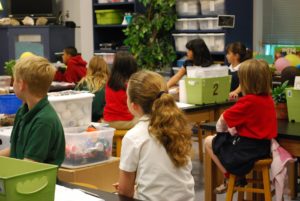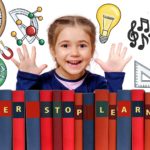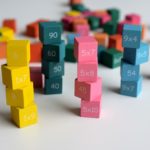As teachers, we understand the importance of engaging students in their learning and helping them retain information in a meaningful way. One way to do this is through hands-on and experiential learning activities. But what exactly are these types of learning, and how can we incorporate them into our lessons?
Hands-on learning is learning by doing. It involves students actively participating in an activity or project, using their hands and bodies to learn and understand a concept. This could be building a model, conducting an experiment, or creating a project. Hands-on learning is particularly effective for kinesthetic learners, who learn best through physical movement and hands-on experiences.
Experiential learning, on the other hand, is learning through experience. It involves students applying what they have learned in a real-world setting or situation. This could be through field trips, guest speakers, or virtual experiences. Experiential learning helps students make connections between their learning and the outside world, which can make the material more relevant and meaningful.
meaningful.
So, how can we incorporate hands-on and experiential learning into our lessons? Here are some tips:
- Begin by identifying the learning goals and objectives for your lesson. What do you want your students to know or be able to do by the end of the lesson? How can hands-on or experiential learning activities help them achieve these goals? For example, if your goal is for students to understand the water cycle, you could have them conduct an experiment to demonstrate the process.
- Look for opportunities to make connections to real-world experiences. This could be through field trips, guest speakers, or virtual experiences. The more authentic the experience, the more meaningful it will be for your students. For example, if you’re teaching a unit on local ecosystems, you could take your students on a field trip to a nearby nature reserve to observe and learn about the plants and animals in their natural habitat.
- Incorporate activities that allow students to engage actively with the material. This could be through simulations, role-playing, or other interactive activities. For example, if you’re teaching a unit on ancient civilizations, you could have students create their own mock archeological dig to learn about the process and discover artifacts.
- Encourage students to ask questions and explore their own interests. This helps to foster a sense of curiosity and ownership in the learning process. For example, if you’re teaching a unit on nutrition, you could have students research and present on a topic of their choice, such as the health benefits of a particular food or the environmental impact of factory farming.
- Don’t be afraid to take risks and try new things. It’s okay if not everything goes as planned – that’s part of the learning process! Encourage your students to embrace their mistakes and use them as learning opportunities.
- Reflect on the experience afterward. Encourage students to think about what they learned and how they can apply it in the future. This could be through a class discussion, a written reflection, or a presentation to the class.
It’s important to note that hands-on and experiential learning doesn’t have to be confined to a single lesson or activity. You can incorporate these types of learning experiences throughout the school year as a way to supplement traditional teaching methods and add variety to your lesson plans.
Maker Space
One way to do this is to create a “maker space” in your classroom or school. A maker space is a dedicated area where students can explore, create, and tinker with different materials and technologies. These spaces can be used for a variety of hands-on and experiential learning activities, such as building and engineering projects, art and design challenges, and computer programming. Maker spaces provide students with the opportunity to apply their knowledge and skills in a more open-ended and creative way.
Project Based Learning
Another way to incorporate hands-on and experiential learning is through project-based learning (PBL). PBL is a teaching method in which students work on a long-term project that requires them to apply their knowledge and skills to solve a real-world problem or challenge. PBL encourages students to be active learners and think critically about the material, making it a great way to incorporate hands-on and experiential learning into your lessons. For example, if you’re teaching a unit on renewable energy, you could have your students work on a group project to design and present a plan for a solar-powered community center.
Incorporating hands-on and experiential learning into your lessons can be a rewarding and effective way to engage your students and help them retain information. It just takes a little creativity and an open mind. Don’t be afraid to try new things and experiment with different approaches. Your students will thank you!
Please comment and share if this was helpful.
Thanks! 😁
Read more Instructional Strategies!










